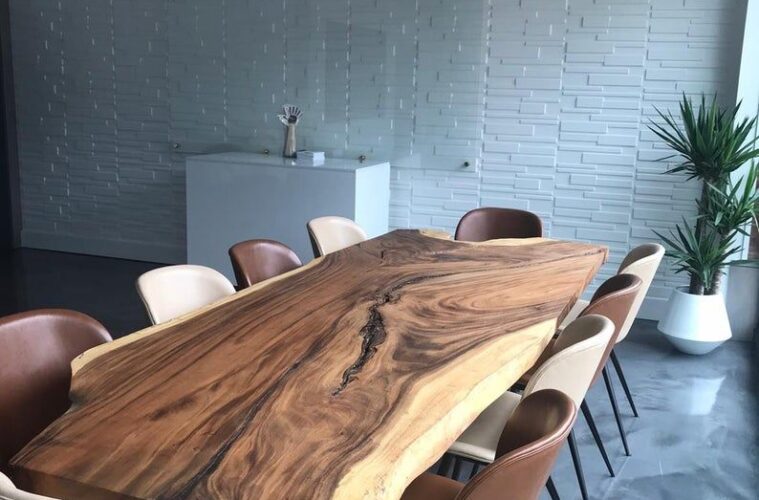Wood slab dining tables are a timeless piece of furniture that adds warmth, elegance, and natural beauty to any dining room. They are crafted from solid slabs of wood, which are carefully selected and cut to showcase the natural character and unique features of each piece. In this article, we will delve into the history and art of crafting a beautiful wood slab dining table, exploring the different types of wood, the techniques used in woodworking, and the benefits of owning one.
1. The History of Wood Slab Dining Tables
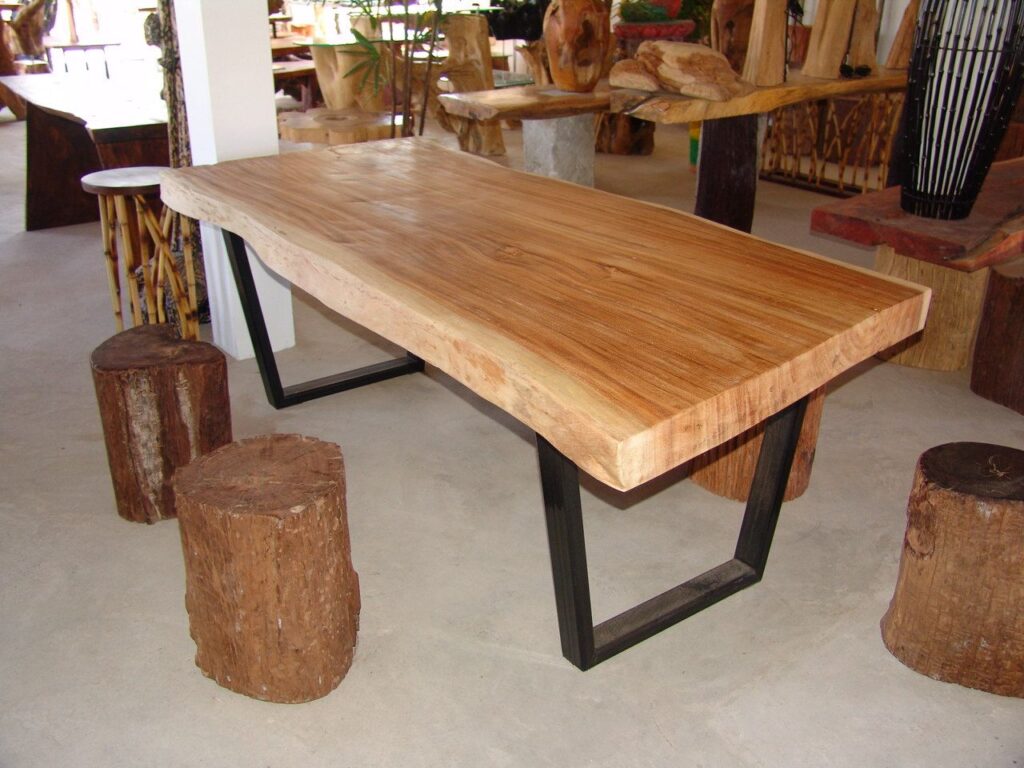
source: pinterest.com
The use of wood as a material for furniture dates back to ancient times. In the early days, wood was the most commonly used material for making furniture due to its abundance and durability. In the early 18th century, wood slab tables became popular in Europe and were prized for their rustic charm and unique character. In the United States, wood slab tables became popular in the 19th century and were used in farmhouses and country homes. Today, wood slab tables have become a popular choice for modern homes, and their timeless beauty and elegance continue to captivate homeowners and interior designers.
2. Types of Wood Used in Wood Slab Tables
Wood slab dining tables are a popular choice for homeowners who desire a unique and natural look for their homes. These tables are made from large slabs of wood that are cut from a single tree. The type of wood used in these tables is crucial in determining their quality, durability, and appearance. In this article, we will explore the different types of wood used in wood slab tables.
One of the most common types of wood used in wood slab tables is oak. Oak is a durable and strong wood that can withstand heavy use and abuse. It has a prominent grain pattern that gives it a distinct and beautiful look. Another popular wood used in wood slab tables is walnut. Walnut is a darker wood that has a rich and warm tone. It is known for its durability and resistance to scratches and dents.
Cherry is another type of wood commonly used in wood slab tables. It has a warm color and a smooth texture that makes it an excellent choice for furniture. Pine is also used in wood slab tables, but it is less durable than other types of wood. It has a lighter color and a softer texture that makes it ideal for rustic or country-style furniture.
The type of wood used in wood slab tables is a crucial factor that determines its durability, appearance, and quality. Oak, walnut, cherry, and pine are some of the most popular woods used in these tables. Each of them has its unique characteristics that make it a suitable choice for different styles and preferences.
3. Techniques Used in Woodworking
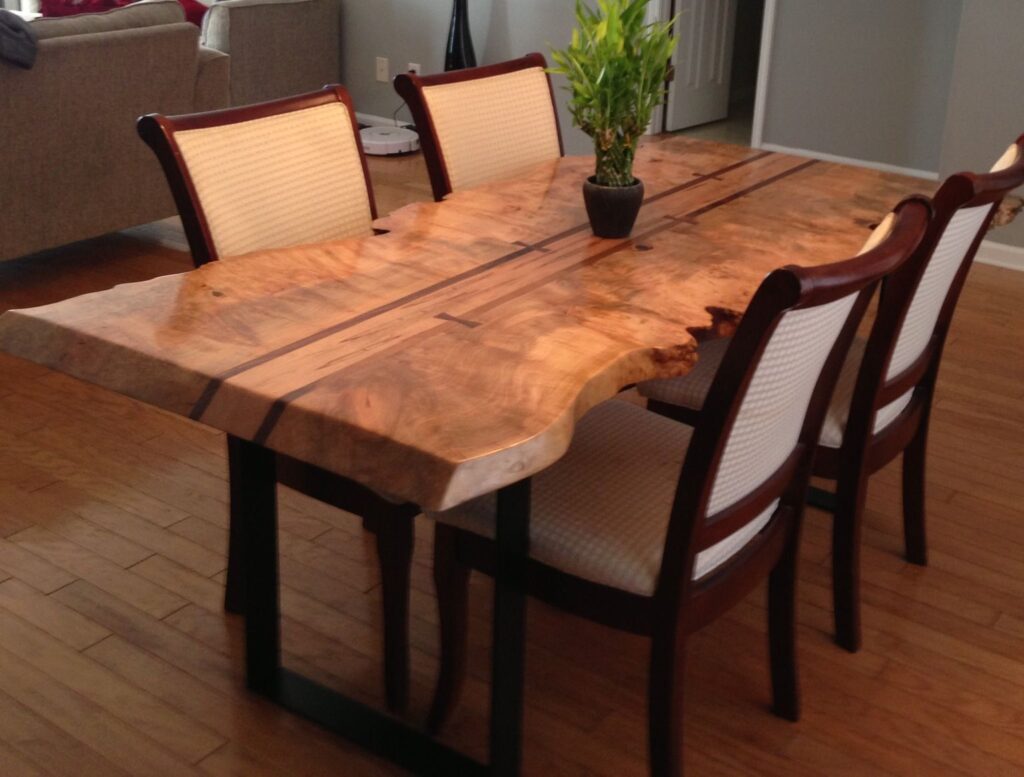
source: pinterest.com
Crafting a beautiful wood slab table requires skill, patience, and attention to detail. Woodworkers use a variety of techniques to create a table that is both functional and aesthetically pleasing. One of the most important techniques used in woodworking is the selection of the wood slab. The wood slab must be carefully selected to ensure that it is free from defects and has a unique character that will enhance the beauty of the finished product. Other techniques used in woodworking include planning, sanding, and finishing, which help to create a smooth, polished surface that is both beautiful and durable.
4. Benefits of Owning a Wood Slab Table
There are many benefits to owning a wood slab table. One of the main benefits is the natural beauty and unique character of each piece. Each wood slab is different, and the finished product reflects the natural beauty of the wood. Wood slab tables are also durable and long-lasting, making them a great investment for homeowners who want a piece of furniture that will stand the test of time. Additionally, wood slab tables are easy to maintain and can be easily cleaned with a damp cloth or wood cleaner.
5. Design Options for Wood Slab Tables
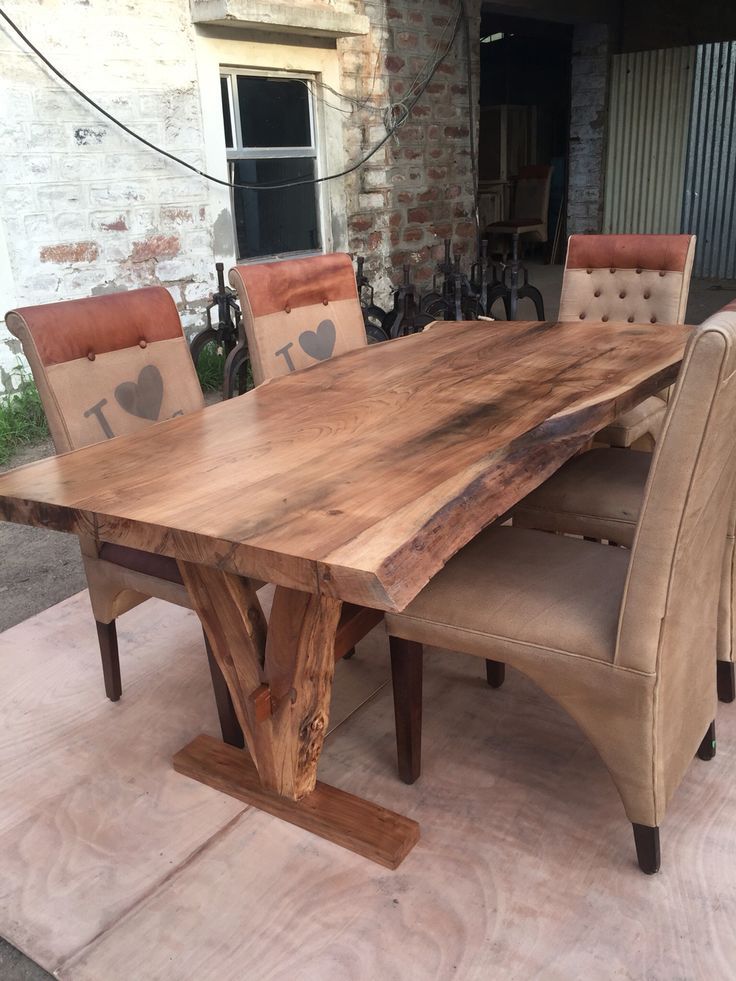
source: pinterest.com
When it comes to design options for wood slab tables, the possibilities are endless. Woodworkers can create tables in a variety of styles, from rustic to modern, and can incorporate different features like live edges, epoxy resin fills, and metal accents. Live edges are a popular design feature that showcases the natural edge of the wood slab, while epoxy resin fills can be used to create unique patterns and designs on the surface of the table. Metal accents like hairpin legs or metal inlays can add a modern touch to a wood slab table.
6. Care and Maintenance of Wood Slab Tables
Proper care and maintenance are essential to the longevity and beauty of a wood slab table. It is important to avoid exposing the table to direct sunlight or extreme temperatures, as this can cause the wood to warp or crack. Spills should be cleaned up immediately to prevent staining, and the table should be regularly cleaned and polished to maintain its natural beauty. It is also important to avoid placing hot or wet objects on the table, as this can damage the surface and cause discoloration.
7. Cost of Wood Slab Tables
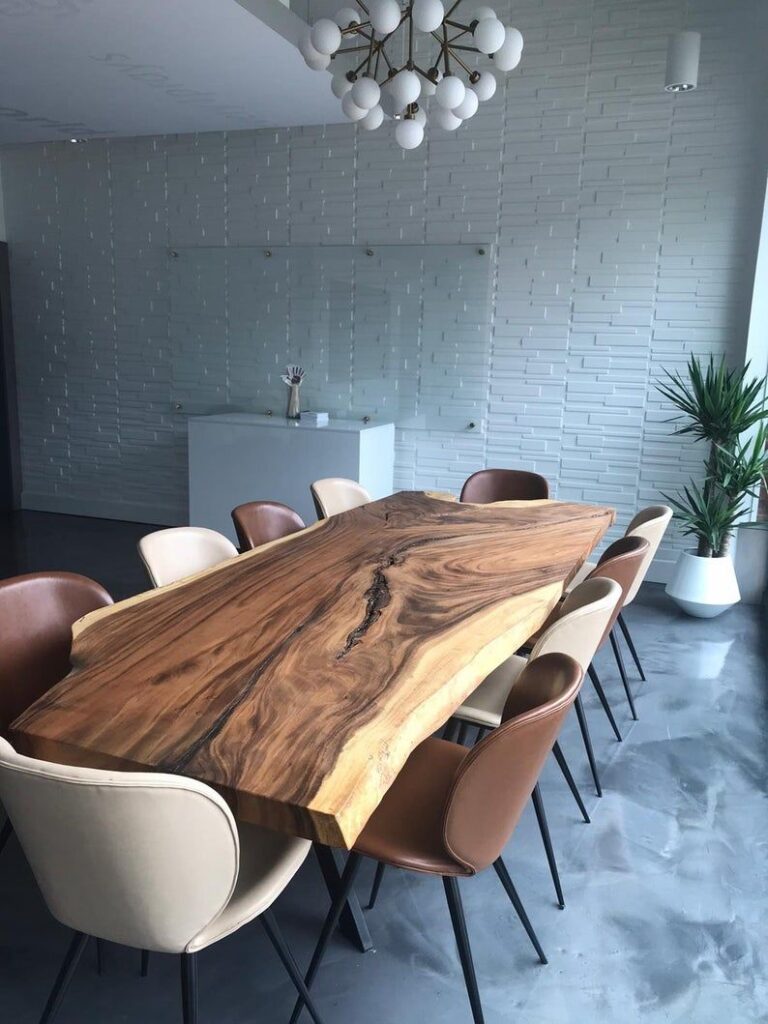
source: pinterest.com
The cost of a wood slab table can vary depending on the type of wood used, the size of the table, and the complexity of the design. Generally, wood slab tables are more expensive than traditional dining tables due to the unique character and beauty of the wood. However, they are also a great investment for homeowners who want a piece of furniture that will last for generations and add value to their home.
Conclusion
In conclusion, wood slab tables are a beautiful and timeless piece of furniture that adds warmth, elegance, and natural beauty to any dining room. They are crafted from solid slabs of wood, which are carefully selected and cut to showcase the natural character and unique features of each piece. With proper care and maintenance, a wood slab table can last for generations and become a treasured family heirloom. Whether you prefer a rustic or modern style, a wood slab table is a great investment for anyone who appreciates the natural beauty of wood and wants a piece of furniture that is both functional and aesthetically pleasing.

